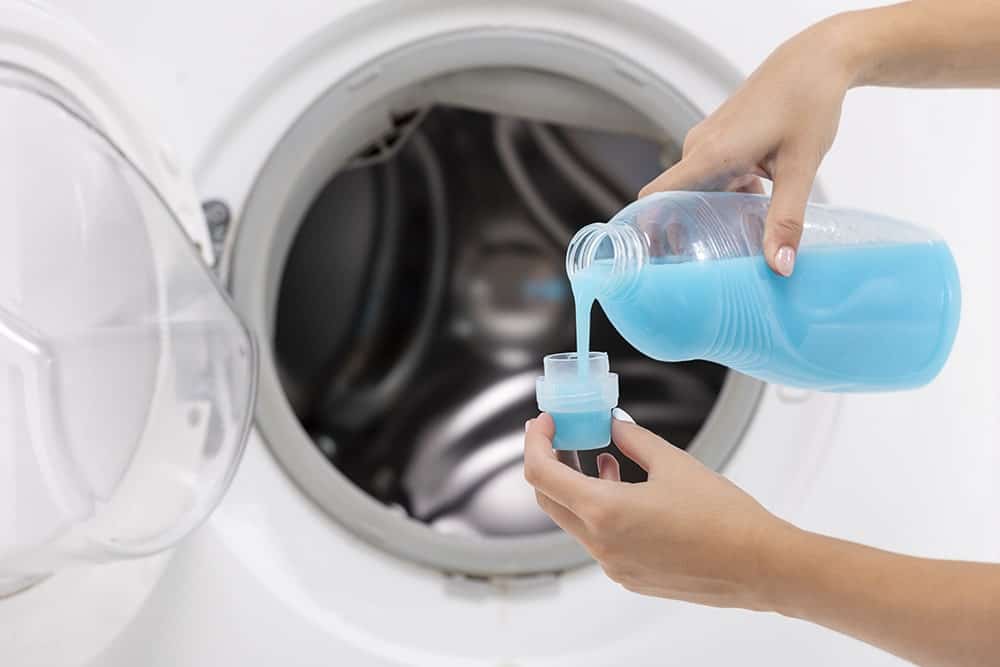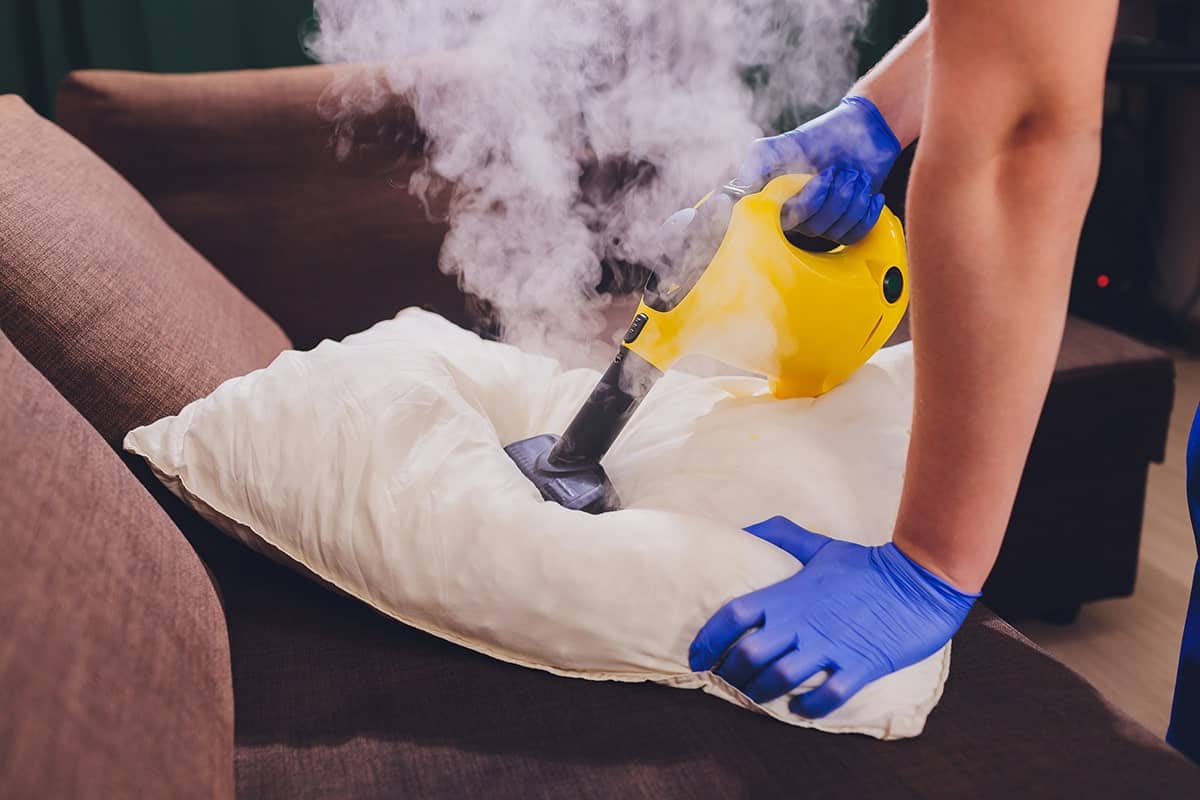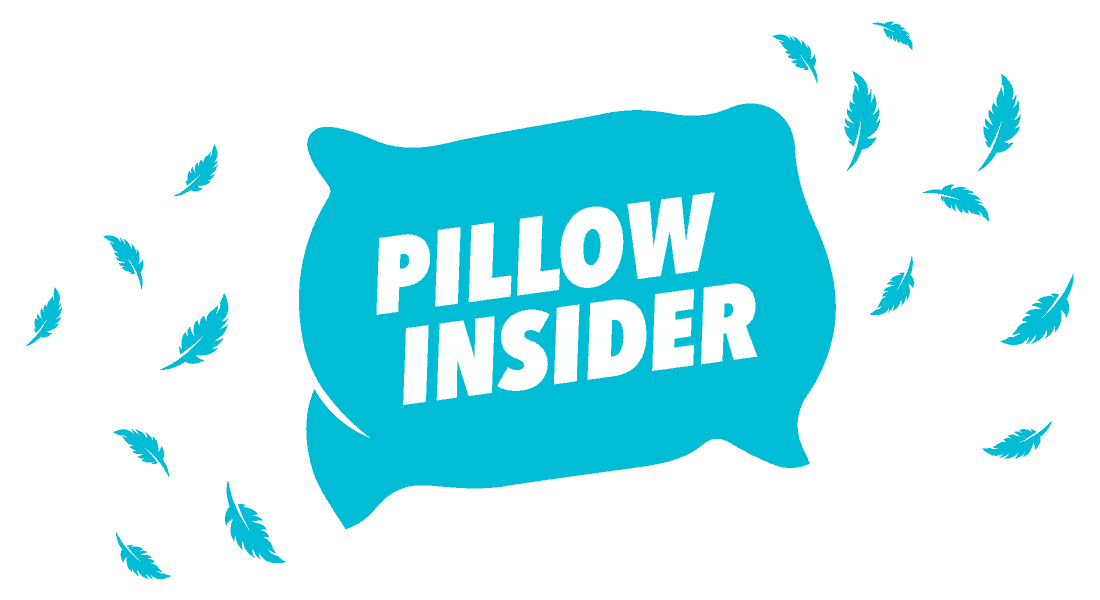Sleeping on unwashed feather or down pillows, on account of enabling it to last longer, can only cause health concerns. In fact, washing your pillows every 4-6 months has been proven to extend the pillow’s life.
Your bedding especially pillows collect the sweat and oil you produce overnight, and store the dead skin cells you shed. Overtime, these materials accumulate to weigh down your pillow’s fluff, making it necessary for you to give them a thorough cleaning.
How you wash your down or feather pillow however becomes extremely important to ensure your pillow’s firmness doesn’t degrade.
Can You Wash Feather and Down Pillows?
Your feather and down pillows can definitely be washed without getting damaged, provided the pillow care instructions are strictly followed. Feather and down pillows are known for their easy maintenance because of their natural fill.
Washing and deep cleaning your pillows should be an essential routine that must be followed every 4-6 months, in order to ensure that the surface you rest your head on is clean and safe.
Not only does a thorough wash keep your pillow clean of dust mites and other allergens, but it also reinvigorates the pillow’s fluffiness and maintains its loft. Cleaner pillows can last longer, provided their filling is maintained by rinsing and drying thoroughly.

How to Clean Down and Feather Pillows in a Washing Machine?
Down and feather pillows are expensive and therefore proper maintenance, washing and cleaning becomes very important since replacing your pillows too soon isn’t an option. Here is a step by step guide that will help you wash your down and feather pillows in a washing machine:
- Take pillow inserts out of the pillow cover. Examine your pillows for rips or holes, especially along the seams. Do not wash a ripped pillow without sewing it first, or else the duck or goose down can escape and clog the washing machine’s drum.
- Take a look at the instructions given on the pillow care label and follow them diligently. Ideally, you should prefer to use a front or top-loading washing machine that comes without an agitator. The agitator which is designed to help rotate your laundry, can end up damaging your pillow. In case no other option is available, you should place your pillows vertically to prevent them from getting caught up in the agitator.
- It is important to place two pillows within your washing machine (one on each side of the agitator if an agitator-style top loaded washing machine is used). This helps maintain balance within the machine.
- Add a very small amount (one or two teaspoons at max) of an HE low-sudsing liquid detergent in order to ensure your pillow gets cleaned thoroughly without enabling a residual buildup.
- You can also add half a cup of bleach to help kill dust mites but fabric softeners or any kind of heavy duty detergents should be avoided at all cost. These can damage the filling material and thus reduce your pillow’s fluffiness.
- Now set your washing machine settings to a delicate cycle.
- Using warm water to clean your pillow can kill dust mites that might be living within, however hot water can damage the pillow fibers. The recommended temperature therefore should lie anywhere between a range of 40-60oC while the speed of your machine cycle should not exceed 800 rpm.
- Try and give your pillow an extra spin and rinse by adding cold water. This helps to get rid of residual detergent caught within your bed pillows.

How to Dry a Down or Feather Pillow?
Your down or feather pillow fillings can easily lose their fluff and thus their loft, if the drying process is not carefully followed. Wringing or twisting your pillows after washing, like you do with your laundry, can have devastating effects on the pillow, which can clump up and lose its fluff. Any attempt of line drying, using a radiator, or putting your pillow out in the sun to dry, will have similar consequences.
Here is the step by step process to follow for drying your duck or goose down or feather pillow without causing any damage:
- After removing the pillows from the washing machine, wrap them between two dry towels and gently press down on it. The dry towels will gradually soak up the excess water.
- Once the extra water has been absorbed from the pillows, fluff them and then place them in the dryer.
- Set your dryer settings to delicate, with either a low-heat or no-heat setting as per your convenience. A no-heat setting is ideally recommended because though it takes a longer time to completely dry your pillows, it does not damage the feathers inside, unlike a low-heat setting that inevitably does.
- In order to keep your pillows plump by breaking the down or feather clumps which have formed, add wool dryer balls wrapped in a pillowcase to the drier, next to the pillows. If wool dryer balls are not available, one to three clean tennis balls or a pair of canvas tennis shoes, wrapped in a pillow case, can also be used instead. Moreover, tossing in a dryer sheet can also help soak up the water left in your pillow, to give it a fresher look.
- You may still notice some clumping even after you have put the dryer balls. Therefore, you need to break these clumps down by stopping the dryer after every 15 minutes to shake the pillow and fluff it up. This will also distribute the still-damp filling and decrease the time it would otherwise take to dry your pillow completely.
- Once you think the pillow is completely dry, turn down the heat if you were using low-heat to dry the pillow, and air-dry the pillows. Not only will it soak up any leftover dampness, it will also help maintain your pillow’s fluffiness and prevent them from overheating.
How to Deodorize Feather Pillows?
If your down pillow smells after washing, you should leave them out in the sun for a couple hours to deodorize and freshen your feather pillows. The extra heat will kill odor-causing bacteria and leave your pillow fresher than before as well as odor free.
In case however, sunlight fails to completely remove the smell, washing your pillows with baking soda will help get rid of the bad odor. The rule of thumb is to add 45 grams of baking soda to your laundry detergent, if your machine is front-load, and 90 grams if it is a top-load one.
During the rinse cycle, adding a few drops of essential oils of your choice, such as lavender, vanilla or rosemary can give your pillows a fine scent.
Frequently Asked Questions
How do you freshen feather pillows without washing them?
Here are few useful tips to freshen your feather pillows without washing them in a machine:
- Feather pillows can be air dried in a dryer for around ten minutes to freshen them up.
- You can even put some tennis balls or wool balls in the dryer to remove the feather clumps within your pillow.
- Air drying your pillow in a dryer by keeping a moist fabric softener dryer sheet alongside can fluff your pillows up.
- Airing your pillow and putting them out in the sun while fluffing them several times in between can help remove odor and freshen your pillow by removing underlying moisture.
Does putting pillows in the dryer kill germs?
Dry heat alone cannot generate a temperature high enough to kill germs. However, putting moist pillows in a dryer with moderate to high heat setting after a wash can kill germs, dust mites and other lingering bacteria. Some pillows like the feather one’s cannot withstand high heat without getting damaged. For such pillows, a dryer might not be the best solution to kill germs.
How long do feather pillows last?
The longevity of feather pillows depends majorly on the combination of feathers within a pillow. The finer they are, the longer a feather pillow will last. Generally, if these pillows are made of durable feathers and are properly maintained, they can easily last for around 5-10 years. Proper maintenance warrants thorough cleansing every 4-6 months, regular fluffing and careful usage.
Can you air dry feather pillows?
Feather pillows can be air-dried to give them a fresher look. They can be placed out in the sun where the gentle heat soaks away moisture and kills odor causing bacteria present within your pillow. However, air drying after washing a feather pillow will not prove to be a good idea. It will only cause your pillow to clump and lose its fluff.
Can you tumble dry a feather pillow?
Yes, feather pillows should be tumble dried in order to maintain their fluff. Since feathers are temperature sensitive, they should be tumble dried using very low or no heat. While tumble drying the pillow, adding 1-3 tennis balls, wool dryer balls or even a pair of tennis shoes within your machine’s dryer to help break down feather clumps and give your pillow a fresher look.
How often should I clean pillows?
Pillows tend to collect remnants of your dried skin cells, your body’s sweat and oil as well as dust, dust mites, bacteria and other such allergens. All these things not only weigh down your pillow but also cause you to develop allergies when you sleep on it. Your pillows therefore, should generally be washed and cleaned thoroughly, every 4-6 months.
What can I do with old feather pillows?
Here are a few options:
- You can donate your old pillow feathers to charity centers or drop them off at a recycling center.
- The feathers inside your pillows are a natural source of nitrogen and therefore work great as compost. They can be used on compost piles while planting.
- You can take out the feather filling and use it to stuff smaller cushions or other similar items.
- You can make a gardening knee cushion out of the old feather pillow, to protect your knees while weeding and sowing.
Check out these ideas for more inspiration.
